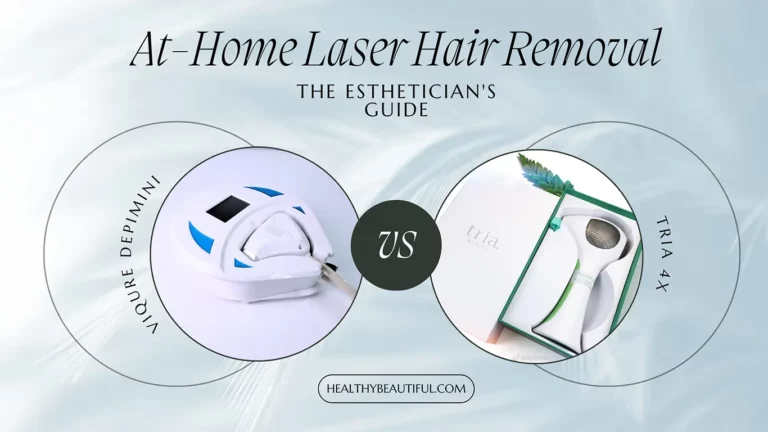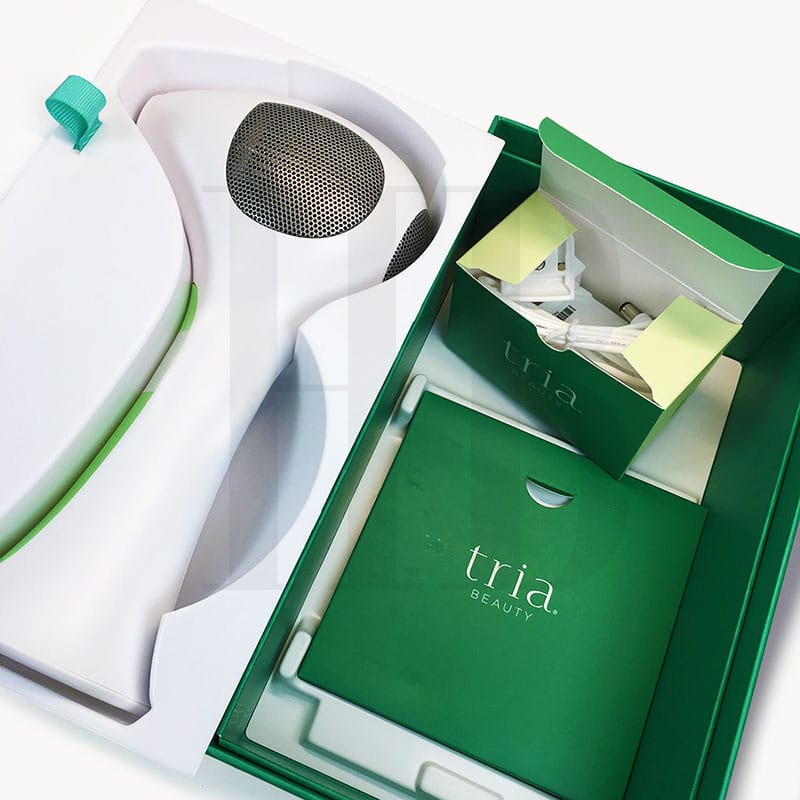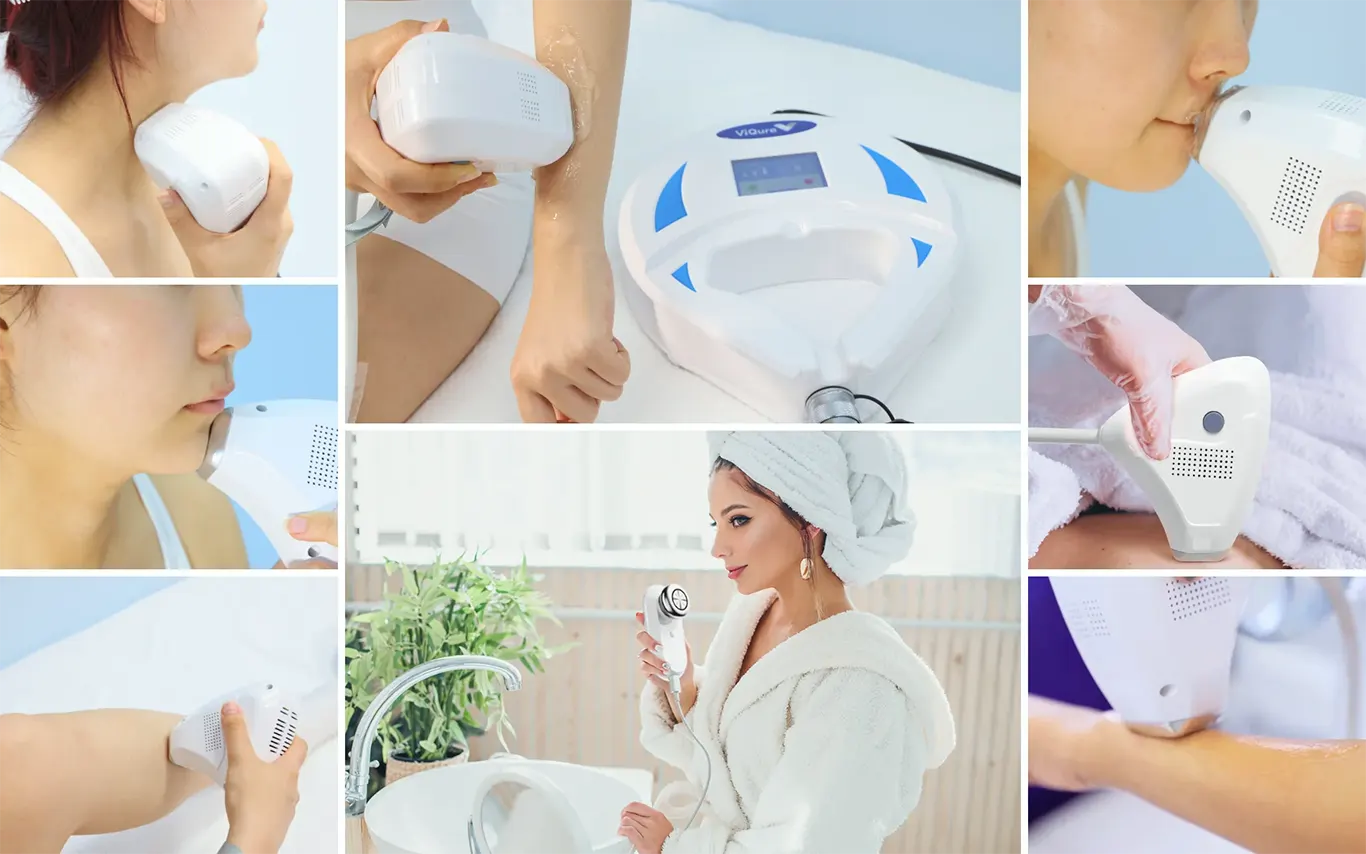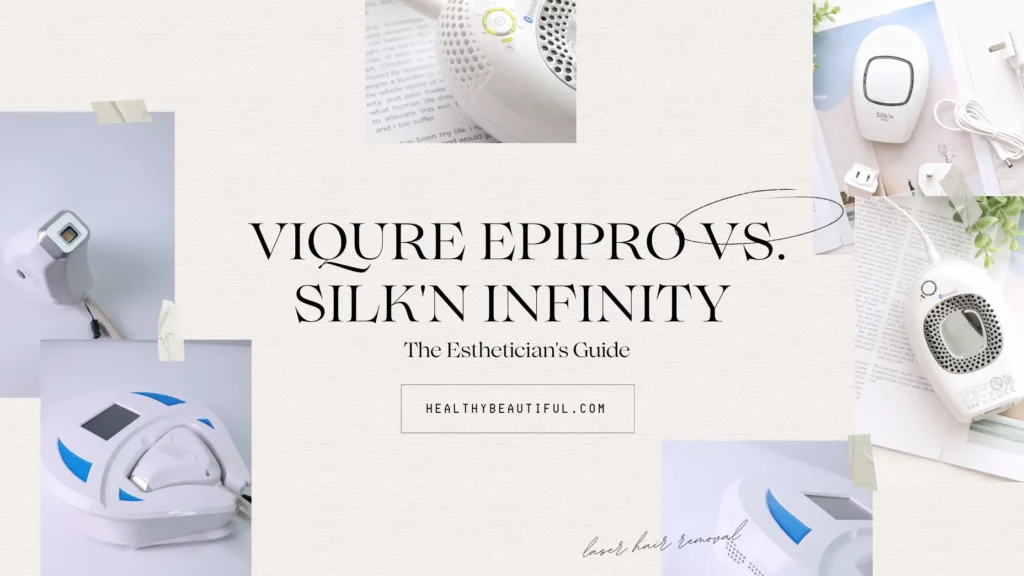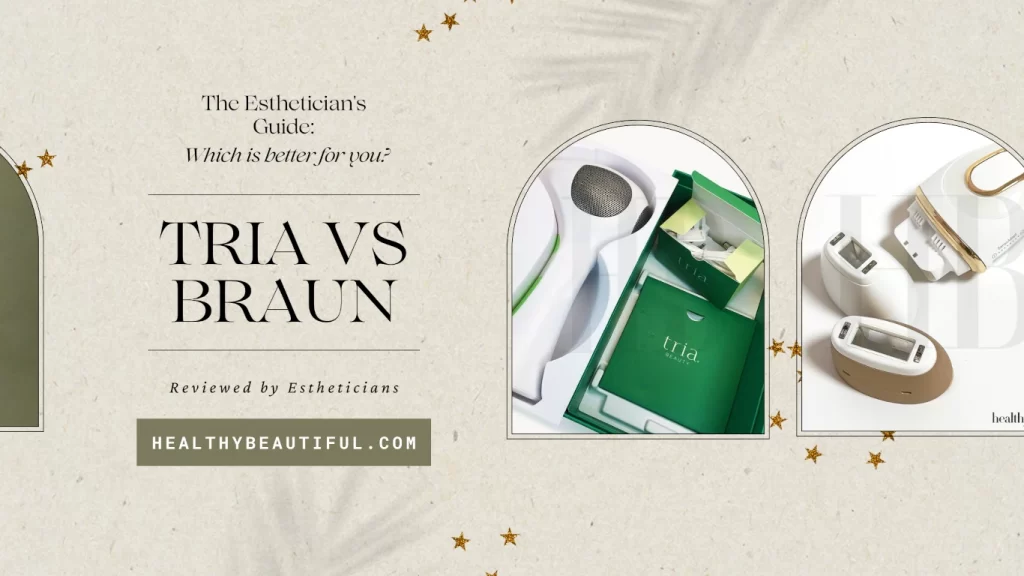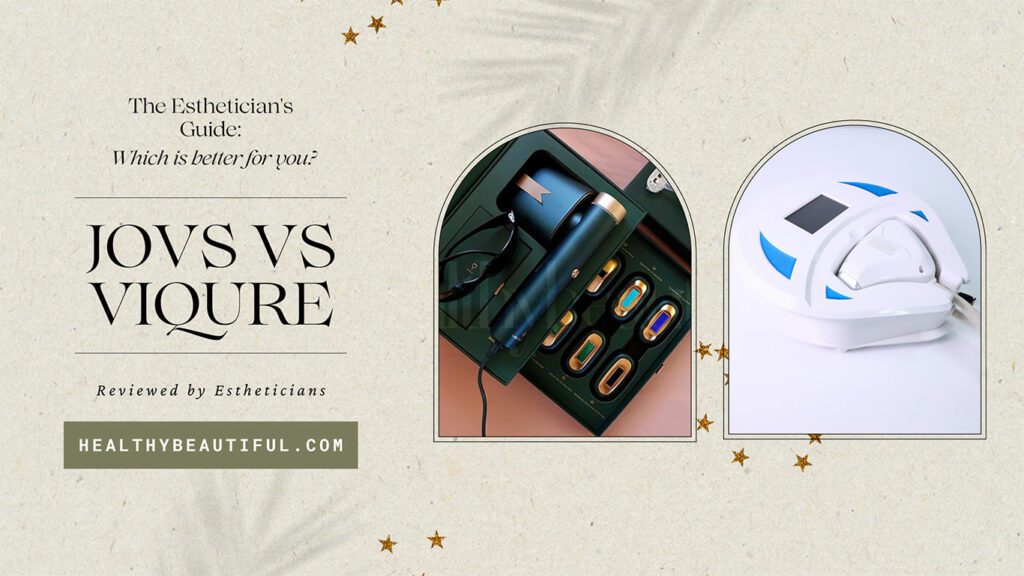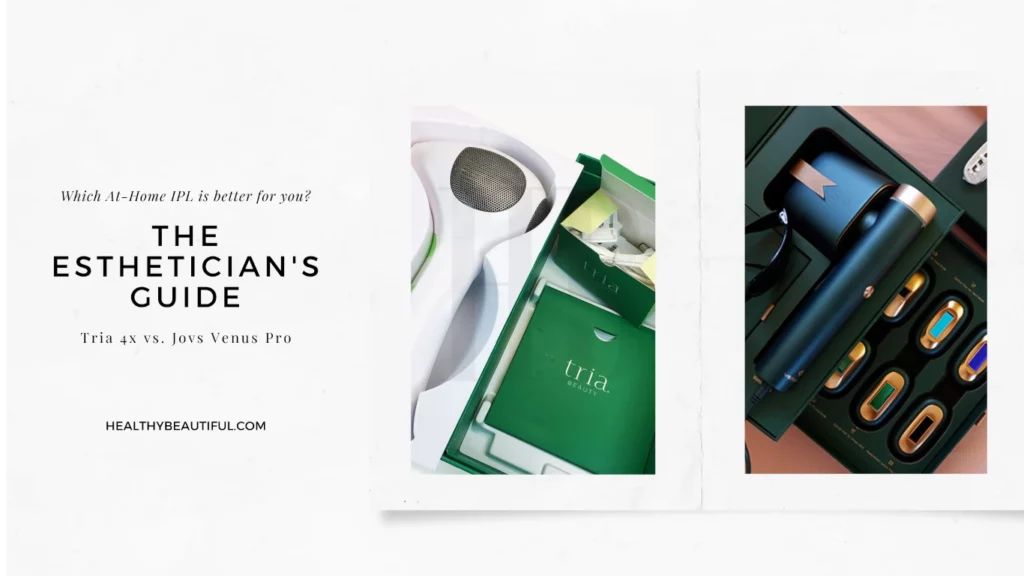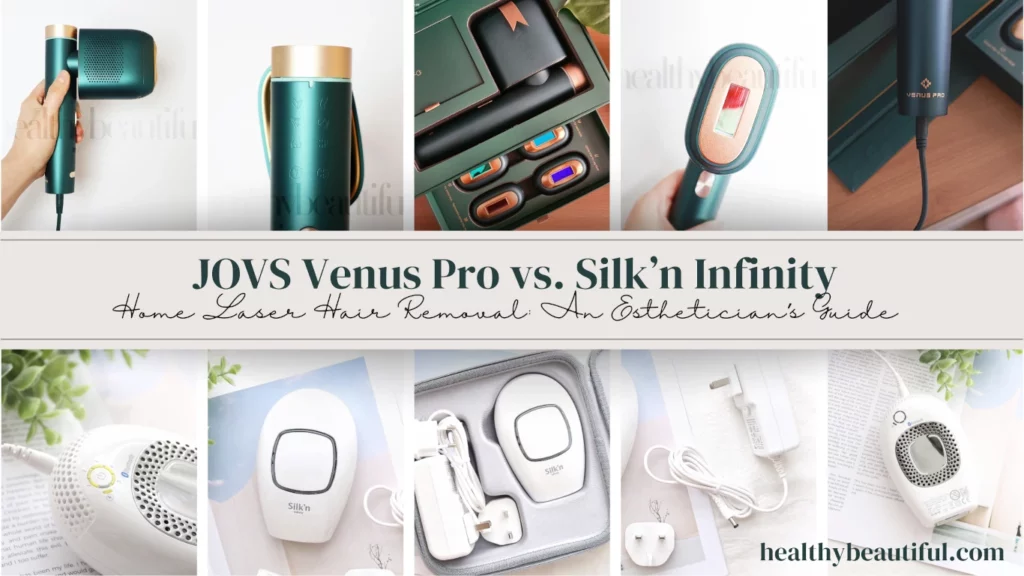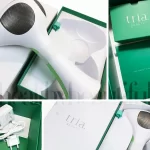Product Comparison Table:
ViQure EpiPro* vs. Tria 4x Laser Hair Removal Overview
Esthetician Tip: Save time by process of elimination. Check if the device is compatible with your skin & hair color first, then compare by technology, power, safety, and other features.
*Formerly known as ViQure DepiMini.
| Tria Hair Removal Laser 4X | ViQure EpiPro – Professional 808nm Diode Laser Hair Removal Machine | |
|---|---|---|
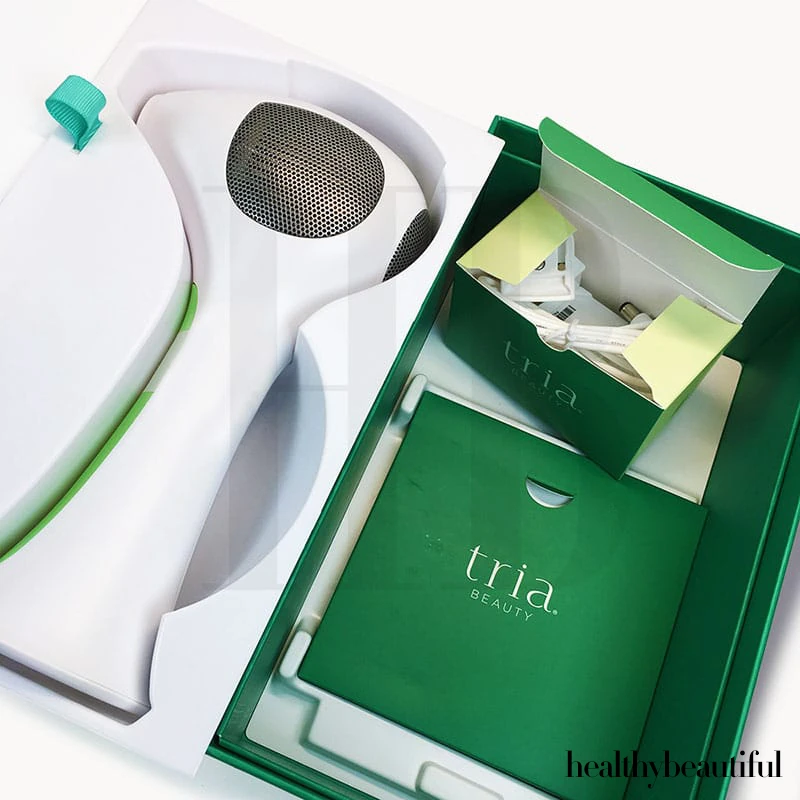 | 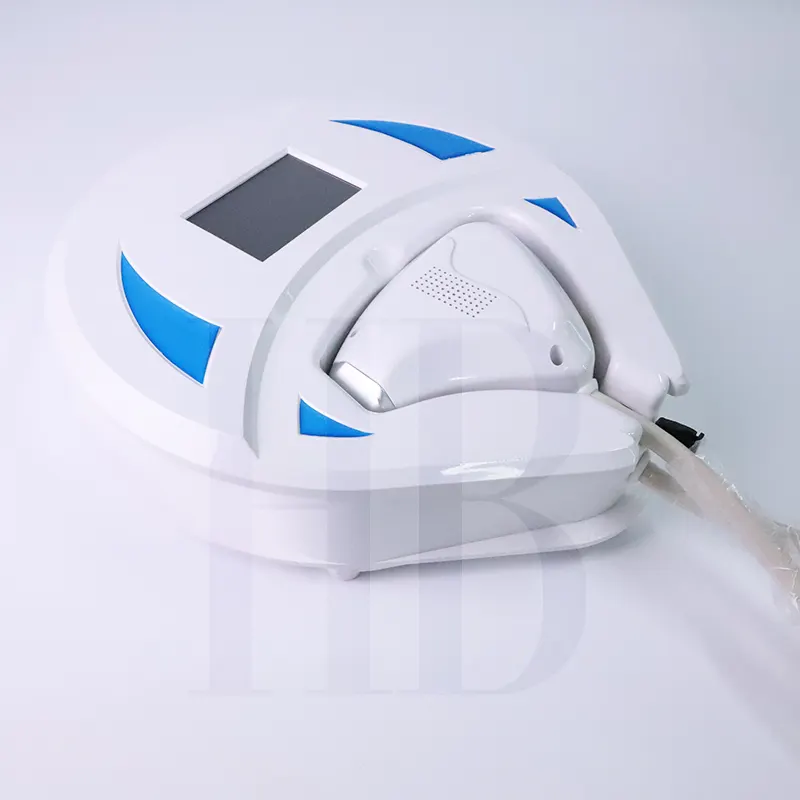 | |
| Verdict: | Strongest At-Home Laser Hair Removal Device | Most Effective for All Skin Tones & Body Areas |
| Ideal for: | Precision lasering for the face (below cheekbones), underarm, & bikini; Looking for a portable, cordless device. | All skin types, All body areas including between the eyebrows & Brazilian (No IPL device is FDA-approved safe for treating above the cheekbones & beyond bikini); Stubborn hair prone to re-growth with IPL, Multi-function device: Permanent Hair Reduction + Skin Rejuvenation |
| Technology: | Diode Laser | Diode Laser |
| Energy Fluence / Power: | 7 – 22 J/cm² | Max 20 J/cm² |
| Flash Window / Spot Size: | Circular .81 cm² | Rectangular 12mm x 14mm (1.68 cm²) |
| Flashes: | 90,000 pulses | 5,000,000 pulses, the highest pulse count among all at-home laser hair removal devices |
| Safety Mechanism: | Skin tone sensor + Contact sensor | Cooling System: Semiconductor + Wind Cooling (0°C~5°C), FREE therapy glasses & goggles included, Cooling gel (sold separately) |
| Pain Level: | Medium to very high depending on the level and your pain tolerance. Can be minimized with topical anesthetic or cooling gels (sold separately) | Pain-free, minimized with built-in cooling system, SHR technique, and cooling gels (sold separately) |
| Skin Tone Coverage: | 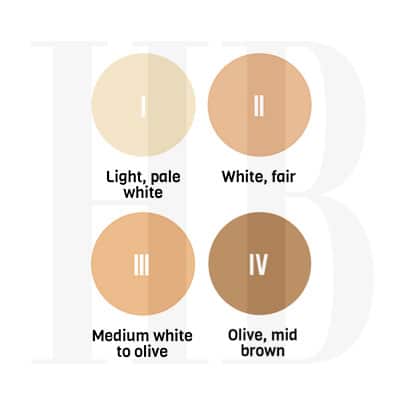 | 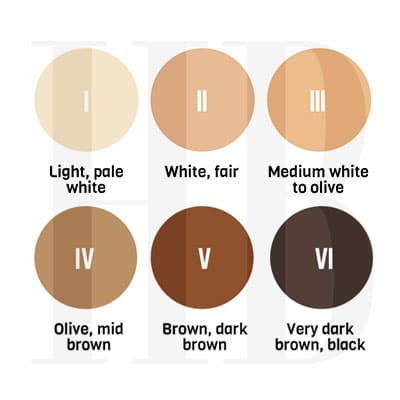 |
| Hair Color Coverage: | 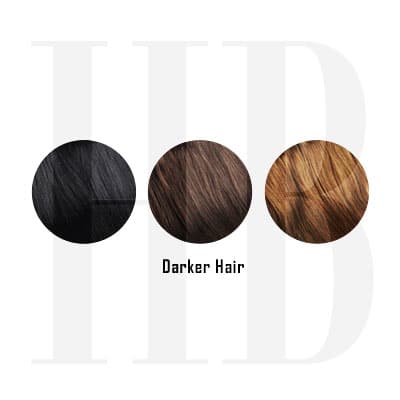 | 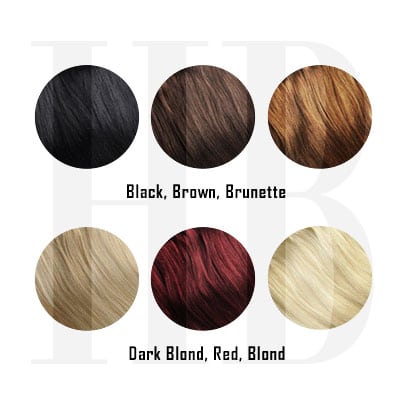 |
| Read In-Depth Review | Read In-Depth Review | |
| Check for Discounts | Check for Discounts |

Ask the Expert: Which is better for you, the Tria 4x or ViQure EpiPro?
BY SAMANTHA WELCH, ESTHETICIAN
Unlike most at-home hair removal machines, the Tria 4x and ViQure EpiPro use diode lasers rather than IPL. Diode laser is one of the only four lasers used by physicians for in-clinic laser hair removal.[1]
The Tria 4x deserves credit for pioneering the use of diode laser for at-home hair removal. With an energy fluence of 7-22 J/cm², it stands as one of the most powerful at-home laser hair removal systems available.[2]
However, one of the major challenges with the Tria hair removal is that it can be painful to use. It also has the same limitations as an ordinary IPL device, and can only work on light skin and dark hair.[3]
Its tiny window size is also incredibly inefficient on large areas like the arms and legs. And with just 90,000 pulses and 300 battery recharges, it has a limited service life compared to the latest devices that average 300,000.
While its diode laser technology delivers powerful hair removal, the Tria 4x, unfortunately, hasn't evolved past its limitations.
In comparison, the ViQure EpiPro is a diode laser device that not only matches the Tria 4x in terms of energy fluence (Max 20 J/cm²) but also surpasses it in versatility and product design. With its advanced cooling technology, this device provides a virtually pain-free hair removal experience.
The ViQure EpiPro is also made for both home and commercial use. It therefore boasts a more comprehensive set of controls, allowing users to customize treatment settings to their preference. This device can be used on all skin tones, all hair colors, and all body parts–something no other IPL device can do.
Its larger spot size and ergonomic design also contribute to better product build and ease of use. This makes hair removal more efficient. And with a staggering 5,000,000 pulses, it's a robust device that can last you a lifetime.
The ViQure EpiPro‘s ability to strike a balance between power, versatility, ease of use, and comfort makes it an excellent choice for professionals who need a reliable and efficient device for their salons and those who want to do hair removal at home.
With this, our Esthetician’s Choice for the best at-home laser hair removal device is: the ViQure EpiPro.
The only downside is its price, as it costs significantly more than the Tria 4x.
However, if you have the budget to invest, the ViQure EpiPro is the most effective and efficient at-home laser hair removal you can buy.
Most devices promise similar results to a professional laser, but this lets you have a machine actually used in a salon.
When utilized for personal use, the advantages the ViQure EpiPro will give you are, bar none, the most you'll ever get out of home hair removal device.
We've outlined the similarities and differences below in detail, but those mentioned above will still be your main qualifiers.
- Product Comparison Table: ViQure EpiPro* vs. Tria 4x Laser Hair Removal Overview
- Ask the Expert: Which is better for you, the Tria 4x or ViQure EpiPro?
- Viable Alternatives
- Overview / Pros & Cons: Tria 4x vs. ViQure EpiPro
- Laser Hair Removal Key Comparison: ViQure EpiPro vs Tria 4x
- Technology
- Conclusion
- References:
- ViQure EpiMini – 808nm Diode Laser Hair Removal Review
- Tria 4x Laser Hair Removal Device Review
- ViQure Coupon Codes
- Tria 4x Coupon Codes
ViQure Coupon Codes
Get the best price with the latest premium promo and discount codes when you buy the ViQure EpiPro online. Sales and special gifts are limited-time offers.

Tria 4x Coupon Codes
Get the best price with the latest premium promo and discount codes when you buy the Tria laser 4x online.
Tria hair removal sales and special gifts are limited-time offers.

Tria Beauty UK
OFFICIAL WEBSITE
Free shipping on all domestic orders above £50. Paypal payment plans available. 60-day money-back guarantee. 2-year warranty.*
+ Get the Best Prices Online
*at the time of publishing. Subject to change. *can't see codes? They might be disabled by Adblockers.
Viable Alternatives
If you don't think the Tria 4x or the ViQure EpiPro is right for you, below are some of the other devices our estheticians have reviewed and highly recommend.
ViQure EpiPro vs. Silk'n Infinity Laser Hair Removal: An Esthetician’s Guide
Tria 4x vs Braun Hair Removal: An Esthetician's Guide
ViQure EpiPro vs. JOVS Venus Pro Hair Removal: An Esthetician’s Guide
JOVS Venus Pro vs. Braun Silk-Expert Laser Hair Removal: An Esthetician's Guide
JOVS Venus Pro vs. Tria 4x Laser Hair Removal: An Esthetician's Guide
JOVS Venus Pro vs. Silk’n Infinity Laser Hair Removal: An Esthetician’s Guide
Overview / Pros & Cons: Tria 4x vs. ViQure EpiPro
ViQure EpiPro – Professional 808nm Diode Laser Hair Removal Machine for Home & Salon Use
Video: 808nm diode laser hair removal device for home and salon use
Pros:
- Designed for professional and home use
- Multi-functional device: offershair removal & skin rejuvenation
- Permanent hair reduction using high-energy diode laser, not IPL. Diode laser is one of the only four lasers used by physicians for in-clinic laser hair removal.
- Less number of treatments required to see results: Diode lasers only need once-a-month sessions vs. IPL devices that needs weekly sessions on average for 3-6 months[5]
- Effective for all skin types, unlike most devices that can only treat light to medium skin tones and dark hair
- Can be used on all hair colors, unlike most devices which can only treat dark hair
- Can be used on all major body parts, including areas off limits to most devices
- Advanced TEC (Thermoelectric Cooling) Cooling for safer and pain-free treatments[4]
- Highest pulse count of any at-home laser hair device at 5,000,000 shots. Long Service Life.
- 3.5-Inch LCD Touch Screen for easy operations and intuitive control
- 808 nm ±10% Long-pulse Wavelength, reaches deep-seated strong roots[6]
- Compact, durable build made from medical plastics
- Uses SHR (Super Hair Removal) Technique for safer, more effective treatments[7]
- Adjustable frequency, energy fluence, pulse duration for comfort and efficacy
- Free therapy glasses included for operator and safety goggles client
- FDA and CE Approved Quality
Cons:
- Requires cooling gel (sold separately)
- Expensive without a coupon. The price point is between a professional machine ($5,000 to $20,000 USD on average) and an at-home device ($100 to $500 USD on average). This means it’s an affordable choice for businesses but can be an investment for individual use.
- Requires multiple passes in an area for 3-5 minutes, but doesn’t have a built-in timer
Tria Hair Removal System 4x
Video: At-home laser hair removal with Tria Beauty
Pros:
- The first FDA-cleared at-home laser hair removal device utilizing a true laser diode (in contrast to IPL or radiofrequency used by other devices).
- Has the highest energy fluence/power of any home use device at 7-22 J/cm²
- Uses a Class 1 laser, the safest type that cannot emit radiation at any hazardous levels[6]
- Safety features include a skin tone sensor that protects the skin and a contact sensor to protect the eyes.
- Great for precision lasering; targets small areas like upper lips, underarms, and bikini lines
- Battery-powered, which means no cords that can restrict movement during treatments
Cons:
- Very small flash window size. Inefficient, hard, and takes a long time to cover larger areas like legs and arms.
- Shares the same coverage limitations as IPL devices—only effective on dark hair and light to medium skin tones. Also can’t be used above the cheekbones or beyond bikini (Brazilian) unlike the ViQure EpiPro
- People with low pain tolerance may not be able to maximize its high energy levels without cooling gels or numbing creams
- Lowest pulse count/device lifespan at only 90,000 pulses vs. 5M for ViQure EpiPro
- Needs re-charging after 30 minutes of use
- Heavy to use, since the batteries are encased within the handpiece instead of housed in a separate console
- Less features and settings in comparison. You can’t adjust the frequency and pulse duration to match your progress.
Laser Hair Removal Key Comparison: ViQure EpiPro vs Tria 4x
For laser hair removal to be effective, both professionally and at home, consistency and commitment are essential.[8]
It is important to damage your unwanted hair gradually during each session. Your hair will eventually become so thin and sparse that it is negligible or cannot grow back.
The process must be repeated safely, effectively, and consistently in order to produce permanent results.
Laser hair removal at home requires effort and patience, so choose a product that is effective and makes you feel comfortable.
Keeping up with your treatment requires enjoying and wanting to use the product.
To help you make an informed purchase decision, we have detailed our experiences with both products below.
Unboxing: Package Contents
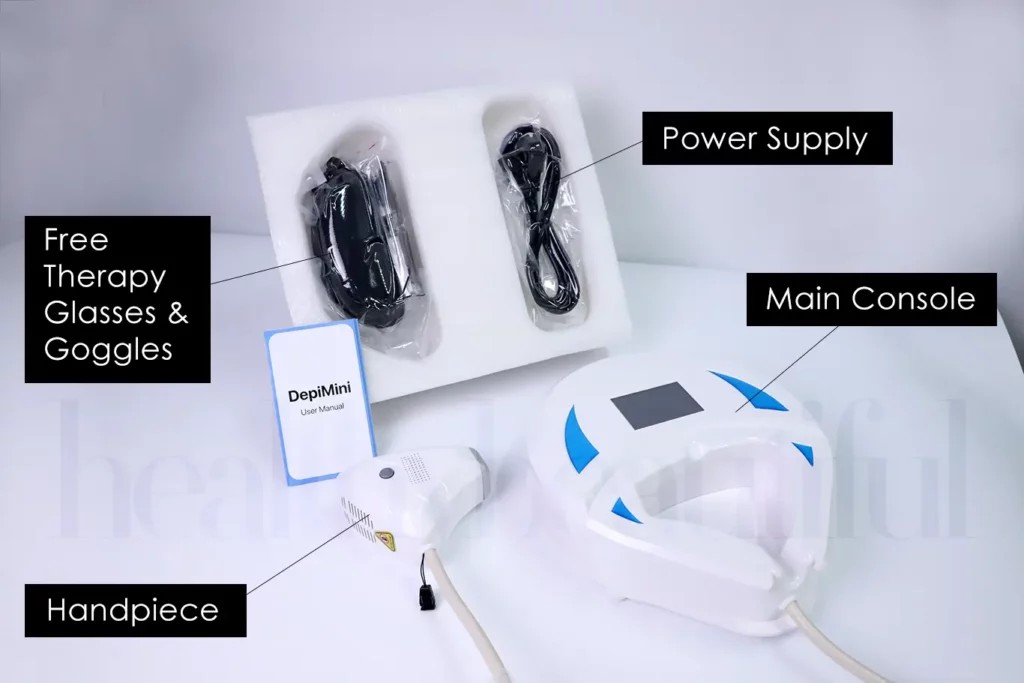
ViQure EpiPro: What's Inside the Box?
- Primary Components: A compact console that cradles and connects to the handpiece, Power supply cable
- Accessories: Laser safety glasses (for the operator), Laser safety goggles (for the client), Quick user guide
Reference: Unboxing the ViQure EpiPro

Tria 4x: What's Inside the Box?
The Tria Laser Hair Removal System comes in a nice, sturdy box that you can use for storage. It's nothing special, but it keeps things tidy and secure.
It comes with: The Tria laser 4x unit, Charging cable, User manual, and Quick guide.
Reference: Unboxing the Tria Laser Removal 4x
Product Design & Our Experience
Product Build and Design
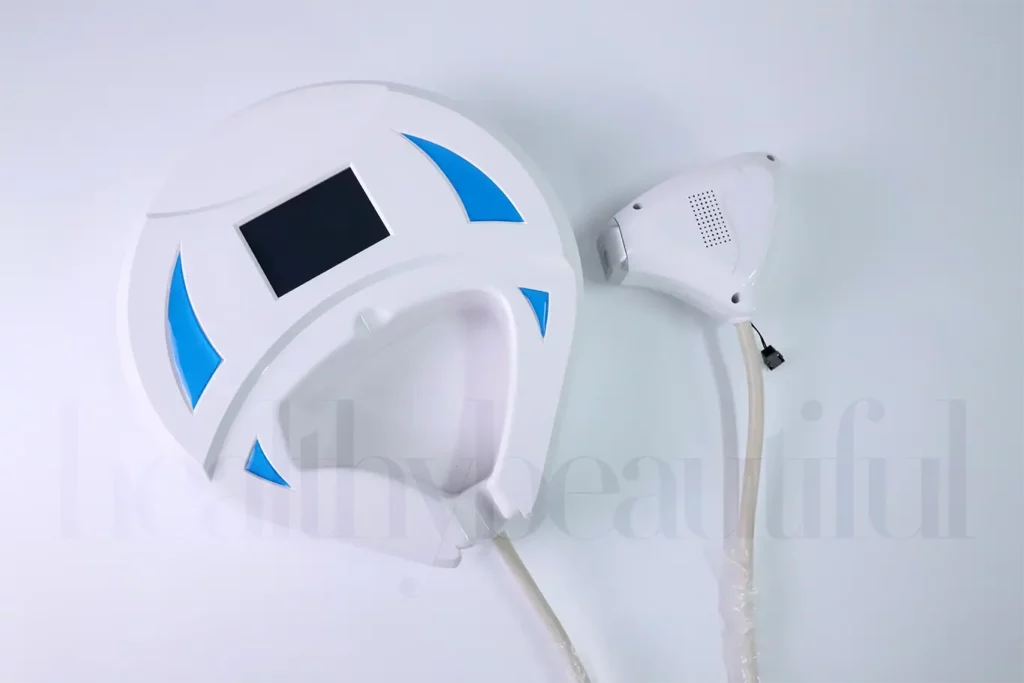
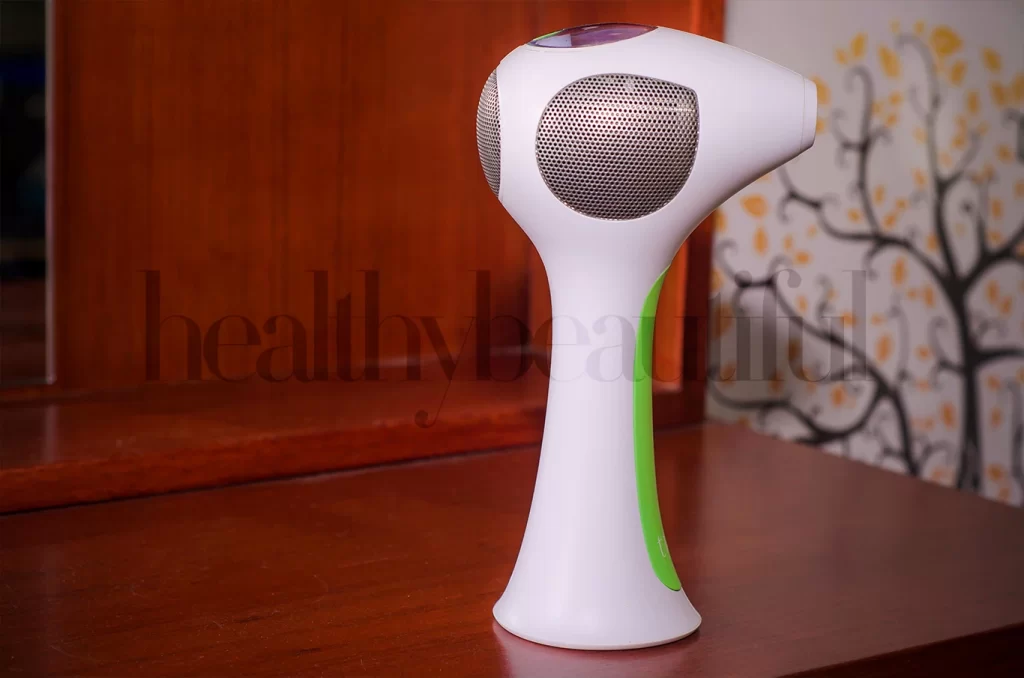
The ViQure EpiPro is comprised of two parts: a compact console that houses its main components and a handpiece. The main console is quite heavy, but the handpiece is very lightweight and easy to hold and maneuver. The thick cord that connects them both is a generous 6.56 feet. This ensures that you can work comfortably even when treating hard-to-reach areas of your body.
The Tria 4x has all its components in one unit. It holds a miniature diode laser machine inside and lithium-ion batteries, which makes it hefty to handle. This is one of the heaviest home devices we've reviewed, especially compared to most IPL devices. However, it does feel balanced in your hands once you have it in a solid grip. It’s cordless as well, which can be freeing if you don’t mind the weight.
Both devices are built with durable materials, and should withstand years of regular use without significant wear and tear.
However, keep in mind that the ViQure EpiPro was also built for commercial use. Professional machines often feature robust construction made to withstand heavy and frequent use in salon settings. ViQure also specializes in medical grade products as a brand.
Reference: Product Design & Using the ViQure EpiPro Professional 808nm Diode Laser Hair Removal Machine, Product Design & Our Experience Using the Tria 4X Laser
Which is Better? Considering the ViQure EpiPro‘s commercial-grade build and medical-grade product expertise, it seems to have the edge in the durability and build comparison between these two devices.
Winner: ViQure EpiPro
Operations & Ease of Use
In general, you'll want a device that's easy to use and doesn't require a steep learning curve. One with clear instructions and user-friendly controls that lets you confidently perform treatments at home without complications.
Both devices have digital screens that is intuitive and very easy to use.
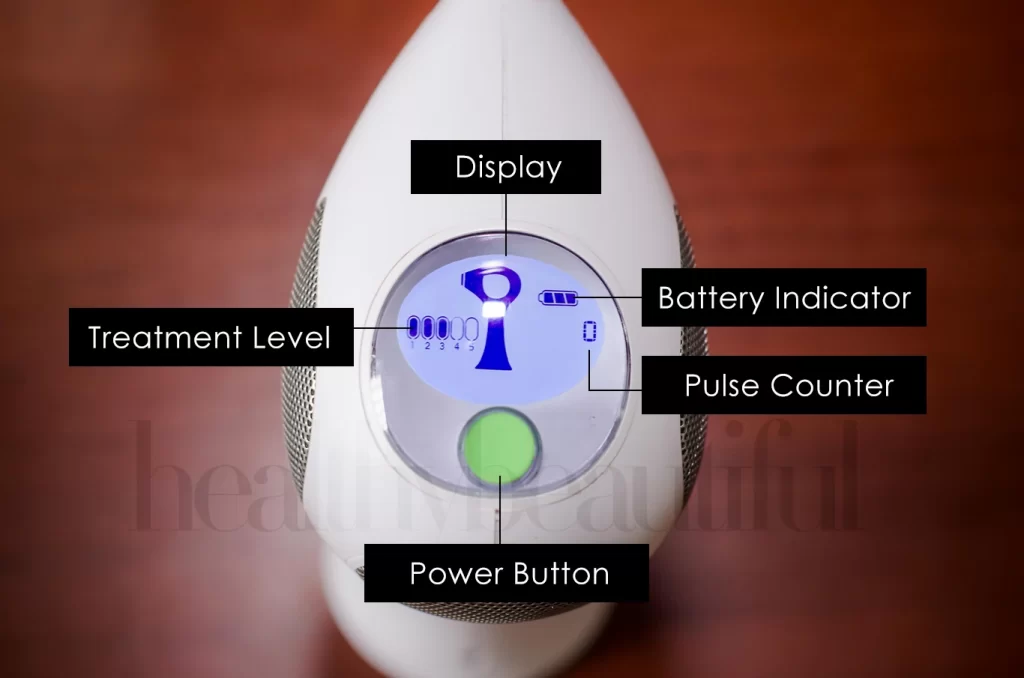
The Tria 4x has simple and basic controls through a monochrome LED screen and a single green button. It shows you a pulse counter, battery indicator, and energy levels. You can toggle the energy level from 1-5 using the green button.
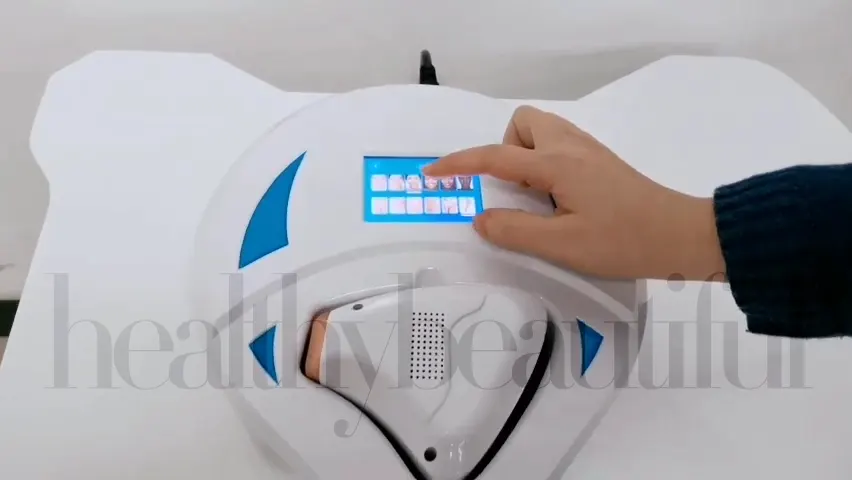


Comparatively, the ViQure EpiPro offers several customization and adaptive features.
You can fine-tune your settings according to your specific needs and preferences.
Its colored 3.5-inch LCD Touch Screen interface allows you to choose between Laser Hair Removal or Skin Rejuvenation modes.
It adjusts its configurations according to your skin tone, body part, preferred energy levels, flash frequency, and cooling.
This personalized approach tailors each treatment to your individual characteristics, ensuring a more effective and efficient hair removal experience.
Reference: Tria 4x LED Display, ViQure EpiPro 3.5-inch LCD Touch Screen: Two Functions, One Solution
Which is Better? The Tria 4x is straightforward and effortless to operate. However, the ViQure EpiPro excels by simplifying the complex process of professional laser hair removal into an easy-to-follow system.
Winner: TIE
Size and Weight
Size and weight also matter for your comfort during treatments.
A lightweight device will be easier to handle and maneuver, ensuring you can target all your treatment areas without feeling strained or fatigued.
The ViQure EpiPro is quite heavy at 5.5lbs (2.2kg). However, the majority of this weight is located on the main console. The handpiece is lightweight, ergonomic, and easy to handle during treatments.
Which is Better? The Tria 4x is much lighter at 1.81llbs (0.8 kg). However, you'll carry all of it during your treatment as it's all housed in one unit. I personally didn’t mind the weight at the start, especially since my movements weren't limited by any cords, but it does take a toll after 30 minutes of use.
Although the Tria 4x is lighter and smaller overall, the ViQure EpiPro wins in practicality and maneuverability.
Winner: ViQure EpiPro
Portability
The Tria 4x is cordless, which means it doesn't require a power cord during use. This provides more flexibility and convenience for travel or use in different locations. Additionally, being smaller and lighter further adds to its portability, making it easier to carry and pack for on-the-go treatments.
On the other hand, while the ViQure EpiPro is designed to be more portable than a professional laser hair removal machine, its bulky console and lengthy cords limit its travel-friendliness compared to the Tria 4x.
Reference: Tria 4x Size, Weight, & Portability, ViQure EpiPro Mini Size & Portability
Winner: Tria 4x
Pulsing Technique

Tria 4x – HR (Single Pass)
When using the Tria 4x, you'll be utilizing the HR (single pass) pulsing technique. This means that with each pulse of the laser, you treat a single spot or area once. You move the device to cover the entire treatment area, overlapping slightly to ensure even coverage.[9]
It's a simple and effective technique, but requires an extraordinary time and effort to treat larger areas. You need to set aside an hour or two for a whole body treatment.
Video: Tria Beauty Hair Removal Laser 4x: How to Use | Tria Beauty®
Reference: Tria Laser 4x Instructions & User Guide
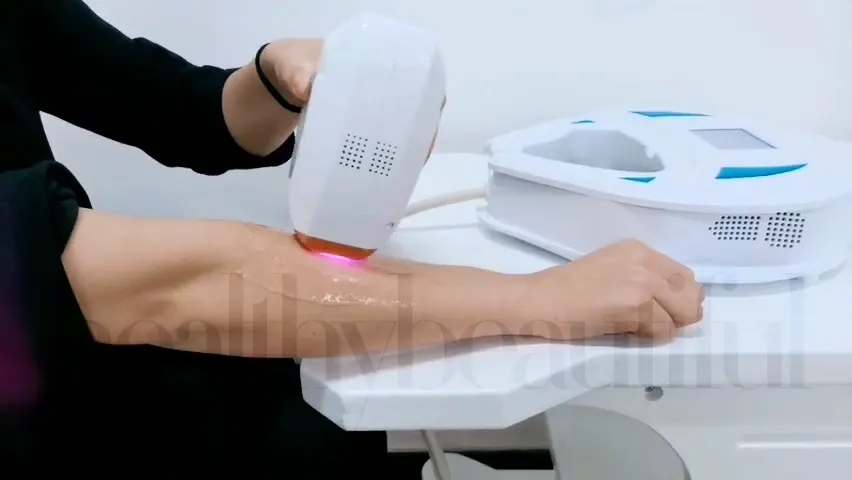
ViQure EpiPro – SHR with Cooling Gel (Multiple Passes)
On the other hand, the ViQure EpiPro employs the SHR (Super Hair Removal) technique with cooling gel. With SHR, the laser emits multiple pulses in rapid succession, covering a larger treatment area with each pass.[10]
The cooling gel helps protect the skin and keeps it comfortable during the treatment. This technique is faster and more efficient for larger areas, making the hair removal process quicker and more comfortable.[11]
Video: Professional diode laser hair removal using SHR demo
Reference: Pulsing Technique: SHR (Super Hair Removal) / Multiple Passes vs. HR (Hair Removal) / Single Pass, How-to use the ViQure EpiPro, The Ultimate SHR vs. HR Guide – Which is Right for You?
Which is Better? The ViQure EpiPro‘s SHR with cooling gel technique is generally considered more efficient and comfortable for larger treatment areas. It allows for faster treatments with better coverage and reduces the risk of discomfort.
However, the choice ultimately depends on your preferences and the specific areas you wish to treat. If you have smaller treatment areas and prefer simplicity, the HR (single pass) technique of the Tria 4x may still be suitable for your needs.
Winner: TIE, Depends on treatment area
Lifespan
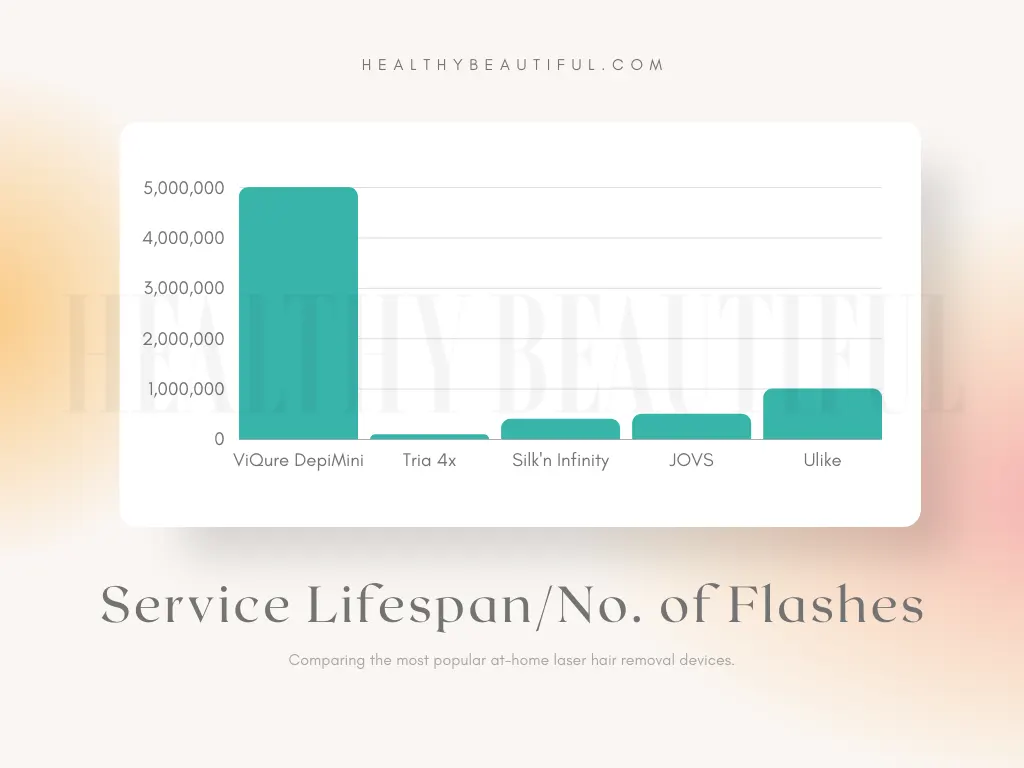
| Laser Hair Removal Device: | Lifespan/No. of Flashes: |
|---|---|
| ViQure EpiPro | 5,000,000 |
| Tria 4x | 90,000 |
| Silk'n Infinity | 400,000 |
| JOVS Venus Pro | 500,000 |
| Ulike Sapphire Air+ | 1,000,000 |
When considering the lifespan and longevity of your laser hair removal device, several factors come into play. These include the number of pulses, durability, battery life, and general wear and tear.
The Tria 4x offers a respectable 90,000 pulses, which translates to approximately 2-3 years of recommended use. However, in comparison, the ViQure EpiPro stands out with over 5,000,000 built-in pulses, making it a more durable and long-lasting option.
Battery life also impacts device lifespan, and the Tria 4x has a limit of only 300 re-charges.
By following the manufacturer's guidelines for general care and maintenance, you can further extend your device's lifespan and achieve consistent results over an extended period.
Reference: ViQure EpiPro Quality, Durability, & Lifespan, Tria 4x Quality & Durability: Lifespan & Battery
Which is Better? With its commercial-grade build, impressive number of built-in pulses, the ViQure EpiProstands out as the better choice, offering reliability and longevity that surpasses the Tria 4x.
Winner: ViQure EpiPro
Frequency & Results
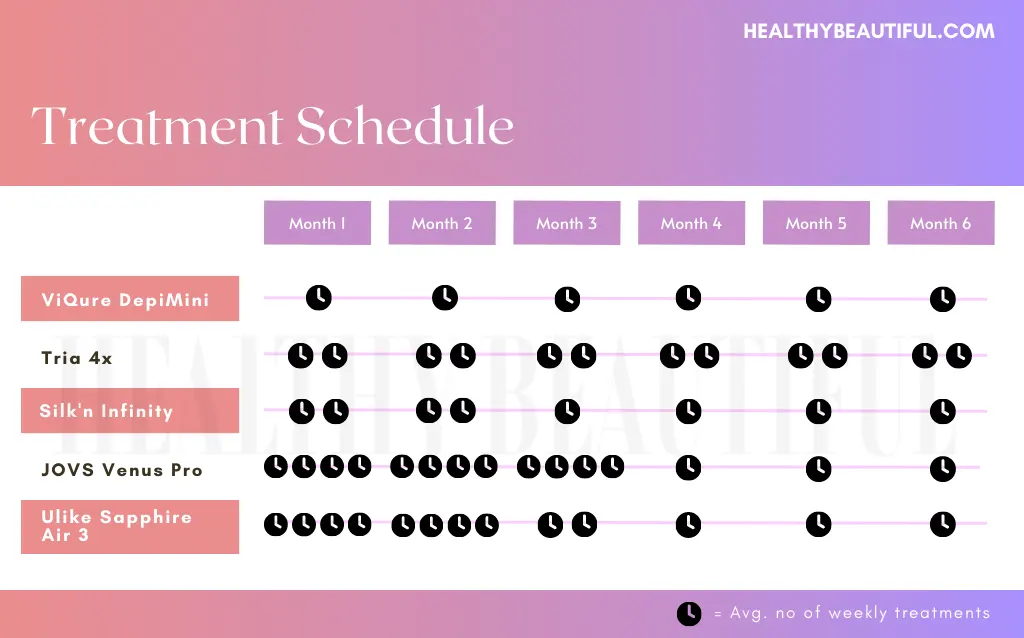
| Laser Hair Removal Device: | Frequency of Treatments: |
|---|---|
| ViQure EpiPro | Use once a month for the first 3-6 months, or until you see permanent results. |
| Tria 4x | Use once every two weeks for the first 3-6 months, or until you see permanent results. |
| Silk'n Infinity | Use once every two weeks for the first 2 months, then once a month until you see permanent results. |
| JOVS Venus Pro | Use 3x-4x weekly for the initial few weeks, followed by monthly or as-need basis as maintenance. |
| Ulike Sapphire Air 3 | Use 3x weekly for the first 3 weeks, 2x weekly for the next 3 weeks, then 1x-2x monthly maintenance. |
The recommended frequency of use for the ViQure EpiPro is once a month for the first 3-6 months or until you see permanent results. This treatment schedule closely mirrors the approach used in professional laser hair removal sessions.[12]
On the other hand, the Tria 4x suggests a more frequent treatment schedule. It is recommended to use the device once every two weeks for the first 3-6 months or until you see results.
Reference: Expected Results: ViQure EpiPro, Tria Hair Removal: Tests, Results, Tips & Tricks
Which is Better? Considering the less frequent treatment schedule and adherence to a professional laser hair removal approach, the ViQure EpiPro, with its once-a-month usage, is the better option. This less intensive schedule allows for convenience and comfort while still achieving comprehensive and lasting hair reduction results.
Winner: ViQure EpiPro
Compatibility
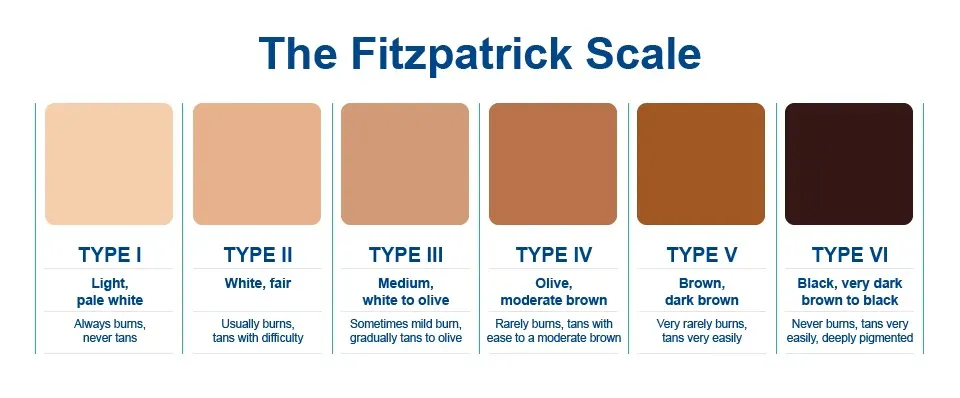
Tria 4x:
- Skin Tone Coverage – The Tria 4x is compatible with Fitzpatrick skin types I-IV, which includes light to medium skin tones.
- Hair Color Coverage – It is compatible with naturally dark to brown hair colors.
- Treatment Areas – For women, the Tria 4x can be used from the cheek line downwards, including the upper lip, chin, jaw, and sideburns. For men, it is suitable for use on the neck and below. However, it is not recommended for use in the genital area.
Reference: Tria 4x Compatibility Guide: Skin Tone, Hair Color, & Treatment Areas
ViQure EpiPro:
- Skin Tone Coverage – The ViQure EpiPro offers wider skin tone compatibility, accommodating Fitzpatrick skin types I-VI, which includes all skin tones. It is worth noting that most IPL devices cannot treat dark skin tones, making the ViQure EpiPro stand out in this regard.
- Hair Color Coverage – The device is designed to work with all hair colors, including gray, white, blonde, and red hair. However, lighter hair colors may require more treatment sessions to achieve the desired results.
- Treatment Areas – The ViQure EpiPro is specifically designed to effectively target all major body areas, including above the cheekbones and a full Brazilian. No other FDA-approved IPL device is known to be approved for these areas, making the ViQure EpiPro unique in its coverage.
Reference: ViQure EpiPro Compatibility Guide, The Best At-Home Laser Hair Removal for Dark Skin
Which is better? The ViQure EpiPro offers broader skin tone coverage, accommodating all skin types, including dark skin tones, which many other IPL devices cannot treat.[13] It is also compatible with all hair colors, including lighter shades. Additionally, the ViQure EpiPro‘s ability to effectively target areas like above the cheekbones and a full Brazilian sets it apart as a comprehensive and versatile option for laser hair removal.
Winner: ViQure EpiPro
Technology
Diode Laser (vs. IPL)
Most at-home laser hair removal devices rely on Intense Pulsed Light (IPL) or variations of it for hair reduction.[14] Both the ViQure EpiPro and Tria 4x, however, use diode lasers.
When comparing diode laser technology to Intense Pulsed Light (IPL) for hair removal, both have their own advantages and considerations. IPL devices, for instance, use quartz lamps. These are cheaper to produce and more affordable for consumers. Diode lasers are much more expensive to manufacture but are highly regarded for their potency and effectiveness compared to IPL.[15]

A few reasons why diode devices like ViQure EpiPro and Tria 4x are considered more effective than the majority of IPL devices on the market:
- Targeting Specific Wavelength – Diode lasers operate at a specific wavelength (e.g., 808nm, 810 nm). This targeted wavelength is highly absorbed by melanin, the pigment responsible for hair color, and allows for precise targeting of hair follicles. In contrast, IPL devices emit a broad spectrum of wavelengths, which can make it less specific in targeting hair follicles. The ability to focus on a specific wavelength makes diode lasers potentially more effective at delivering energy to the hair follicles.
- Energy Concentration – Diode lasers concentrate their energy into a single wavelength, allowing for more efficient and effective hair removal. The concentrated energy helps to precisely target the hair follicles while minimizing damage to the surrounding skin. IPL devices, on the other hand, emit a range of wavelengths, which results in less concentrated energy being delivered to the hair follicles. This can potentially reduce the effectiveness of IPL in hair removal.
- Higher Energy Levels – Diode lasers can typically deliver higher energy levels compared to IPL devices. Higher energy levels are often associated with better results in hair removal, as they can provide more effective heating and damage to the hair follicles. IPL devices may have limitations in delivering higher energy levels due to the broader range of wavelengths they emit, which can result in less effective hair removal.
- Professional-Grade Performance – At-home diode laser devices like ViQure EpiPro and Tria 4x are designed to provide professional-grade performance, with technology and power similar to those used in salon or clinic settings. This higher power and precision make them more effective in reducing hair growth and delivering long-lasting results. Many IPL devices available for at-home use may not have the same level of power or precision, leading to potentially less effective outcomes.
By delivering higher energy levels and concentrating that energy on the hair follicles, devices like the ViQure EpiPro and Tria 4x can achieve better results in inhibiting hair regrowth over time.[16]
References: ViQure EpiPro – Product Technology, Tria 4x – Technology: Product Specifications
Energy Fluence (Laser Power) & Pain Levels
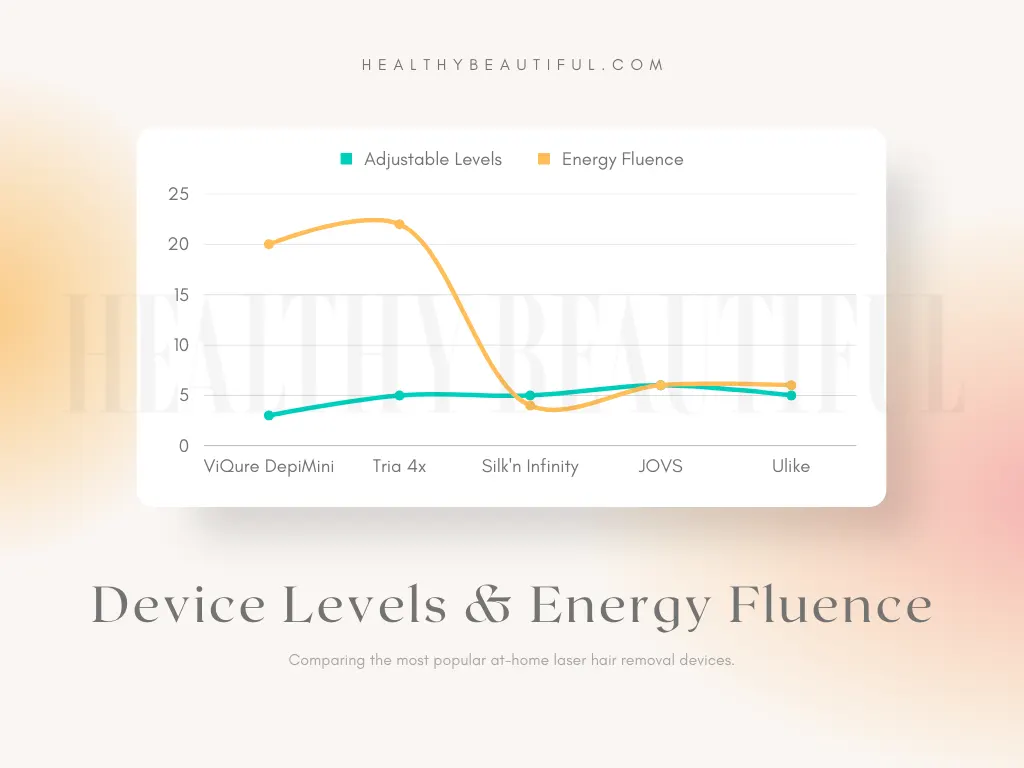
| Laser Hair Removal Device: | Max Power / Energy Fluence: |
|---|---|
| ViQure EpiPro | Max 20 J/cm² |
| Tria 4x | 6-22 J/cm² |
| Silk'n Infinity | 2.5-4 J/cm² + 70-400 microampere (µA) Galvanic Current |
| JOVS Venus Pro | 1 – 6 J/cm² |
| Ulike Sapphire Air+ | 19.8 J / 6.022 J/cm² |
In laser hair removal treatments, energy fluence plays a crucial role in determining the procedure's effectiveness.
Higher energy fluence levels can target and destroy hair follicles better, leading to better and longer-lasting hair reduction results. However, using very high energy levels can also increase the risk of discomfort or adverse effects, so finding the right balance is critical.
On the other hand, using lower energy fluence levels might make the treatment more comfortable, but it could potentially reduce hair removal efficacy since it may not adequately damage the hair follicles to prevent regrowth.
So, choosing an appropriate energy fluence level is essential for laser hair removal. This is to achieve both effective hair reduction and a tolerable treatment experience for the patient.
Due to their use of diode lasers, Tria 4x and ViQure EpiPro offer the highest energy fluence in the at-home market.
References: ViQure Energy Fluence, Tria 4x Energy Fluence
However, in terms of pain or discomfort, only the ViQure EpiPro offers several cooling mechanisms to protect the surrounding skin and minimize discomfort during the treatment.
- Cooling Gel – The procedure calls for the use of a cooling gel that acts as a protective barrier, minimizing overheating risk and ensuring a comfortable experience.
- Built-in Cooling System – A dedicated cooling system is integrated into the device, continuously cooling the skin during the treatment session. This prevents discomfort and reduces adverse reactions.
- Super Hair Removal (SHR) Technique – The product employs the SHR technique, which delivers lower fluence levels in multiple passes. This approach reduces the risk of adverse effects while maintaining effective hair reduction.
The Tria 4x does not have a cooling mechanism at all, but you can use a numbing cream prior and a cooling gel after to soothe your skin.
| Laser Hair Removal Device: | Safety/Cooling Mechanism: |
|---|---|
| ViQure EpiPro | Cooling System: Semiconductor + Wind Cooling (0°C~5°C), FREE therapy glasses & goggles included, Cooling gel (sold separately) |
| Tria 4x | Skin tone + contact sensor |
| Silk'n Infinity | Automatic skin tone + contact sensor |
| JOVS Venus Pro | Sapphire Skin-Cooling System + Contact sensors. Custom modes for each body part. Recessed flash window. FREE IPL glasses + Razor |
| Ulike Sapphire Air+ | Sapphire Ice-Cooling Technology. Custom modes for each body part. FREE IPL glasses + Razor. |
Which is Better? Both the Tria 4x and the ViQure EpiPro are designed to be well-tolerated during treatments. However, the ViQure EpiPro‘s cooling mechanism and application of the SHR technique make it stand out as a potentially more comfortable option. This allows for a personalized and gentle treatment experience while maintaining a high energy fluence.
As with any laser hair removal procedure, individual pain tolerance may vary, but overall, both devices aim to provide effective hair removal with manageable levels of discomfort.
Winner: ViQure EpiPro
Spot Size
Spot size refers to the area of skin covered by the laser beam during each pulse in a laser hair removal device.
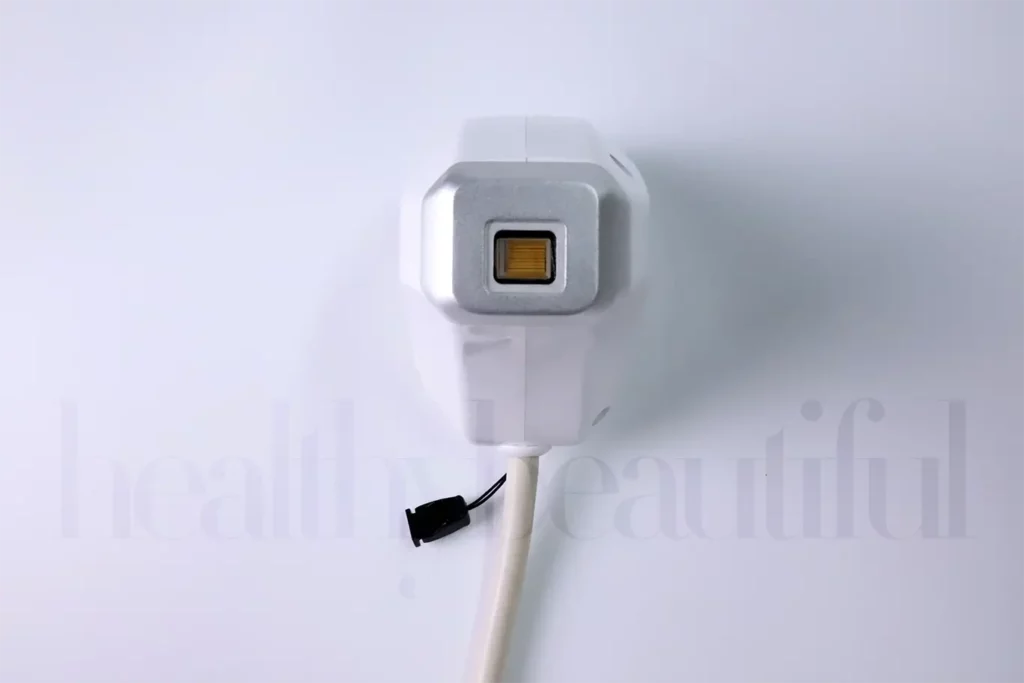
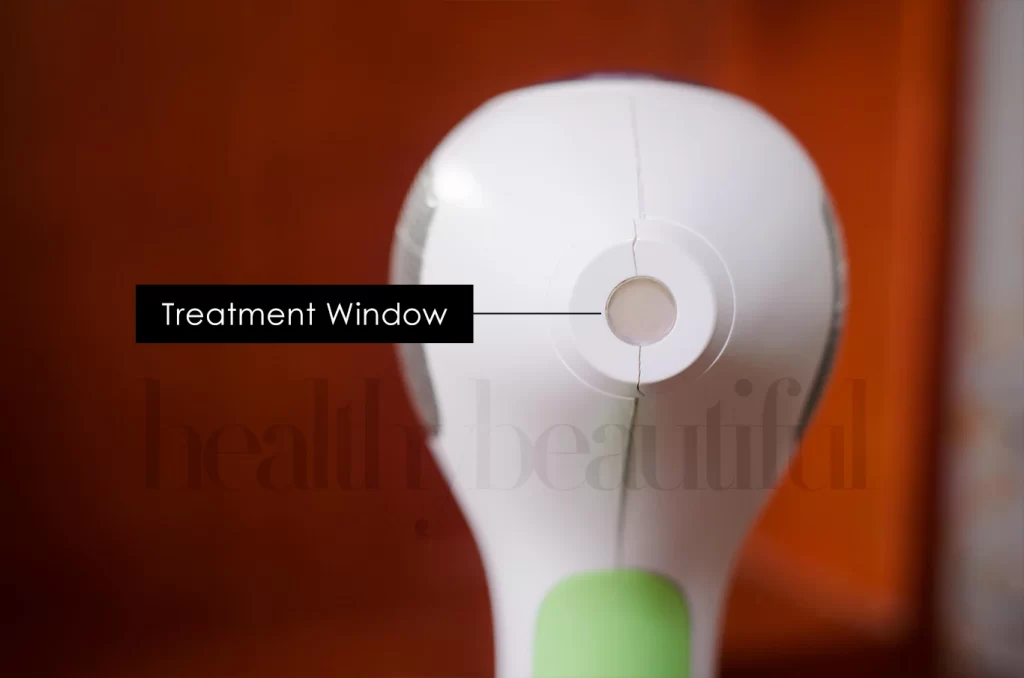
The ViQure EpiPro features a spot size of 12 mm x 14 mm. This larger spot size allows for a more significant coverage area during each pulse, making the treatment process faster and more efficient for larger body areas.
The Tria 4x has a spot size of 1 cm². While still effective, the smaller spot size requires more passes to cover a larger treatment area. This may take slightly longer during each session.
References: Tria 4x Spot Size/Treatment Window, ViQure Key Parameters: Spot Size
Which is Better? The ViQure EpiPro‘s larger spot size provides an advantage in treatment efficiency. It covers a wider area with each pulse, reducing treatment time for larger body parts. On the other hand, the Tria 4x‘s spot size of 1 cm² is smaller and may require more time to achieve the same coverage.
Winner:ViQure EpiPro
Laser Wavelength
The ViQure EpiPro utilizes a laser wavelength of 808 nm. This wavelength is known for its effective penetration into hair follicles, targeting the melanin pigment responsible for hair growth.
The Tria 4x features an output wavelength of 810 nm, which is also a standard wavelength used in diode lasers for hair removal treatments.
References: Tria 4x Laser Wavelength, ViQure EpiPro Key Laser Wavelength
Which is Better? Both the ViQure EpiPro and the Tria 4x utilize laser wavelengths in the near-infrared spectrum, with only a slight difference in their specific values. Both wavelengths effectively target hair follicles and reduce hair by focusing on melanin absorption.
However, considering their spot size, the ViQure EpiPro with its larger spot size is the better option. The larger spot size allows for more coverage during each pulse, making the treatment process faster and more efficient for larger body areas.
This can result in shorter treatment times and additional convenience for users when compared to the Tria 4x‘s smaller spot size, which may require more time to cover the same area.
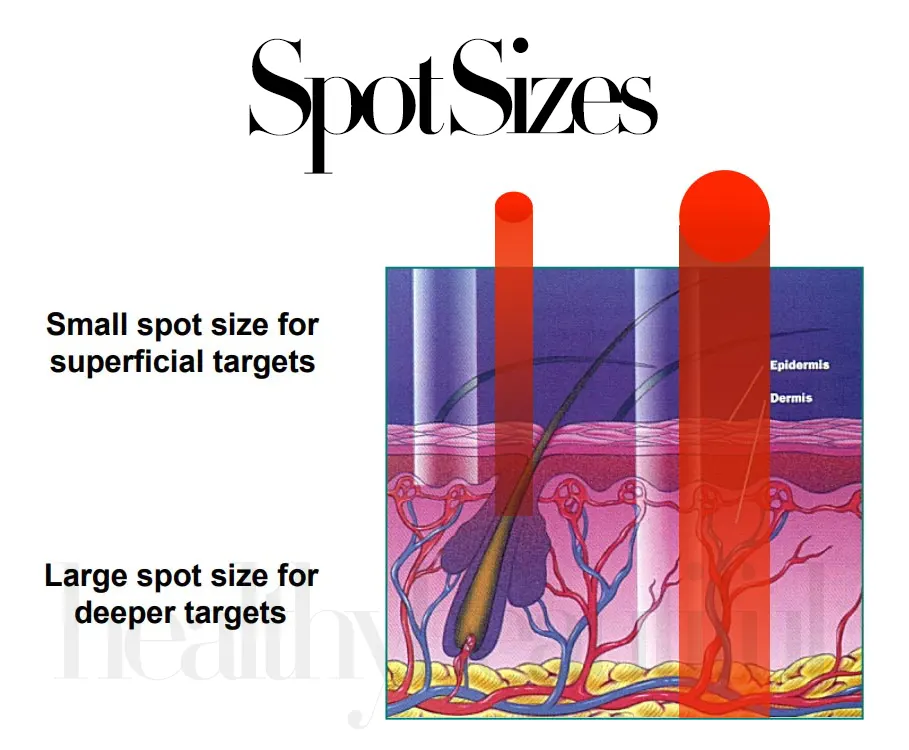
Winner: ViQure EpiPro
Safety
The Tria 4x is classified as a Class 1 laser, the safest category according to their potential to cause biological damage. It emits laser radiation at non-hazardous levels, ensuring user safety during treatments.
The device features an eye safety mechanism that requires the entire laser aperture to be covered by your skin to trigger the flash. This skin contact sensor prevents accidental pulses, adding an extra layer of safety.
Furthermore, the Tria 4x‘s laser is small and focused, eliminating the need for protective eyewear, unlike IPL devices where the light can be bright and scattered.
Additionally, the device has a skin tone sensor at the bottom that ensures only those with compatible skin tones can use the device. This provides an extra safety measure for skin protection.
The ViQure EpiPro incorporates several safety mechanisms to enhance the user experience. It features Advanced TEC (Thermoelectric Cooling), which helps maintain skin temperature and reduce discomfort during treatments.
The use of cooling gel provides additional protection and comfort during the hair removal process.
The ViQure EpiPro also utilizes the SHR (Super Hair Removal) technique, a safer and more efficient approach that emits multiple rapid pulses, reducing adverse effects.
To safeguard the eyes, the device comes with free IPL glasses for added protection during treatments.
References: Tria 4x Safety, ViQure EpiPro Safety
Both the Tria 4x and the ViQure EpiPro have received FDA approval, confirming their compliance with safety and performance standards set by the regulatory authority.
Winner: TIE
Conclusion
There are several at-home laser hair removal devices on the market, but the ViQure EpiPro and the Tria 4x stand out as formidable competitors. While both devices utilize true diode lasers, the ViQure EpiPro rises above as the superior choice, offering a wealth of advantages and enhancements.
TheViQure EpiPro stands out with its wider skin tone coverage, accommodating a broader range of users, including those with darker skin tones that most IPL devices cannot treat. Its versatility extends to all hair colors, including lighter shades, making it a more inclusive option that can be used by anyone looking for effective hair removal.
Moreover, the ViQure EpiPro‘s larger spot size and ergonomic design enhance treatment efficiency and comfort, ensuring smoother sessions across larger body areas. Its advanced cooling technology provides a virtually pain-free experience, setting it apart from the Tria 4x, which lacks such comfort-enhancing features.
While the Tria 4x deserves recognition as the pioneering brand for diode laser hair removal at home, it has struggled to keep pace with newer devices that offer superior cooling mechanisms and overall product design.
In the end, the ViQure EpiPro emerges as the clear winner, combining power, versatility, ease of use, and advanced cooling technology to deliver the most effective and comfortable at-home laser hair removal experience.
References:
- Bernstein, E. F., & Island, T. C. (2014). Lasers and Energy-Based Devices for the Consumer: The Future of Esthetic Energy-Based Devices. Laser and Light Source Treatments for the Skin, 186.
- Wheeland, R. G. (2012). Permanent Hair Reduction With a Home-Use Diode Laser: Safety and Effectiveness 1 Year After Eight Treatments. Lasers in Surgery and Medicine, 44, 550-557.
- Arsiwala, S. Z., & Majid, I. M. (2019). Methods to overcome poor responses and challenges of laser hair removal in dark skin. Indian journal of dermatology, venereology and leprology, 85, 3.
- Zaferani, S. H., Sams, M. W., Ghomashchi, R., & Chen, Z. G. (2021). Thermoelectric coolers as thermal management systems for medical applications: Design, optimization, and advancement. Nano energy, 90, 106572.
- Toosi, P., Sadighha, A., Sharifian, A., & Razavi, G. M. (2006). A comparison study of the efficacy and side effects of different light sources in hair removal. Lasers in Medical Science, 21, 1-4.
- AL-Hamamy, H. R., Saleh, A. Z., & Rashed, Z. A. (2015). Evaluation of effectiveness of diode laser system (808 nm) versus Intense Pulse Light (IPL) in the management of unwanted hair: A split face comparative study. International Journal of Medical Physics, Clinical Engineering and Radiation Oncology, 4(01), 41.
- Royo, J., Moreno‐Moraga, J., & Trelles, M. A. (2017). Clinical assessment of a new 755 nm diode laser for hair removal: efficacy, safety and practicality in 56 patients. Lasers in Surgery and Medicine, 49(4), 355-360.
- Town, G., Ash, C., Dierickx, C., Fritz, K., Bjerring, P., & Haedersdal, M. (2012). Guidelines on the safety of light‐based home‐use hair removal devices from the European Society for Laser Dermatology. Journal of the European Academy of Dermatology and Venereology, 26(7), 799-811.
- Moore, C. (2019). Safe and Effective Laser Hair Removal Treatments: A Literature Review for New Providers. Journal of the Dermatology Nurses' Association, 11(6), 269-278.
- Hammes, S., Ockenfels, H. M., Metelmann, H. R., Raulin, C., & Karsai, S. (2010). New approach to photoepilation: Diode laser with SHR (Super Hair Removal) compared to alexandrite laser. Der Hautarzt, 61, 880-884.
- Lim, S. P. R., & Lanigan, S. W. (2006). A review of the adverse effects of laser hair removal. Lasers in medical science, 21, 121-125.
- Freedman, B. M., & Earley, R. V. (2000). A structured treatment protocol improves results with laser hair removal. Journal of Cutaneous Laser Therapy, 2(3), 131-135.
- Lepselter, J., & Elman, M. (2004). Biological and clinical aspects in laser hair removal. Journal of Dermatological Treatment, 15(2), 72-83.
- Haedersdal, M., Beerwerth, F., & Nash, J. F. (2011). Laser and intense pulsed light hair removal technologies: from professional to home use. British Journal of Dermatology, 165(s3), 31-36.
- Ormiga, P., Ishida, C. E., Boechat, A., & Ramos-e-Silva, M. (2014). Comparison of the effect of diode laser versus intense pulsed light in axillary hair removal. Dermatologic Surgery, 40(10), 1061-1069.
- Campos, V. B., Dierickx, C. C., Farinelli, W. A., Lin, T. Y. D., Manuskiatti, W., & Anderson, R. R. (2000). Hair removal with an 800-nm pulsed diode laser. Journal of the American Academy of Dermatology, 43(3), 442-447.

